Osaka (大阪市) is a designated city in the Kansai region of Japan. It is the capital city of Osaka Prefecture and the largest component of the Keihanshin Metropolitan Area, the second largest metropolitan area in Japan and among the largest in the world with over 19 million inhabitants. Situated at the mouth of the Yodo River on Osaka Bay, Osaka is the second largest city in Japan by daytime population after Tokyo’s 23 wards and the third largest city by nighttime population after Tokyo’s 23 wards and Yokohama, serving as a major economic hub for the country. Historically a merchant city, Osaka has also been known as the “nation’s kitchen” and served as a centre for the rice trade during the Edo period.
Prehistory to the Kofun period
Some of the earliest signs of human habitation in the Osaka area at the Morinomiya ruins comprise shell mounds, sea oysters and buried human skeletons from the 6th–5th centuries BC. It is believed that what is today the Uehonmachi area consisted of a peninsular land with an inland sea in the east. During the Yayoi period, permanent habitation on the plains grew as rice farming became popular.
By the Kofun period, Osaka developed into a hub port connecting the region to the western part of Japan. The large numbers of increasingly larger tomb mounds found in the plains of Osaka are seen as evidence of political-power concentration, leading to the formation of a state.
Asuka and Nara period
The Kojiki records that during 390–430 AD there was an imperial palace located at Osumi, in what is present day Higashiyodogawa ward, but it may have been a secondary imperial residence rather than a capital.
In 645, Emperor Kōtoku built his Naniwa Nagara-Toyosaki Palace in what is now Osaka, making it the capital of Japan. The city now known as Osaka was at this time referred to as Naniwa, and this name and derivations of it are still in use for districts in central Osaka such as Naniwa (浪速) and Namba (難波). Although the capital was moved to Asuka (in Nara Prefecture today) in 655, Naniwa remained a vital connection, by land and sea, between Yamato (modern day Nara Prefecture), Korea, and China. Naniwa was declared the capital again in 744 by order of Emperor Shōmu, and remained so until 745, when the Imperial Court moved back to Heijō-kyō (now Nara). By the end of the Nara period, Naniwa’s seaport roles had been gradually taken over by neighboring areas, but it remained a lively center of river, channel, and land transportation between Heian-kyō (Kyoto today) and other destinations.
Osaka Itineraries
Make the most of your time in Osaka with my carefully planned itineraries for trips from 1 to 5 days. Or use one of my special interest itineraries. And don’t miss my Osaka-Kyoto and Osaka-Kyoto-Tokyo combination itineraries.
1. Explore Dotonbori
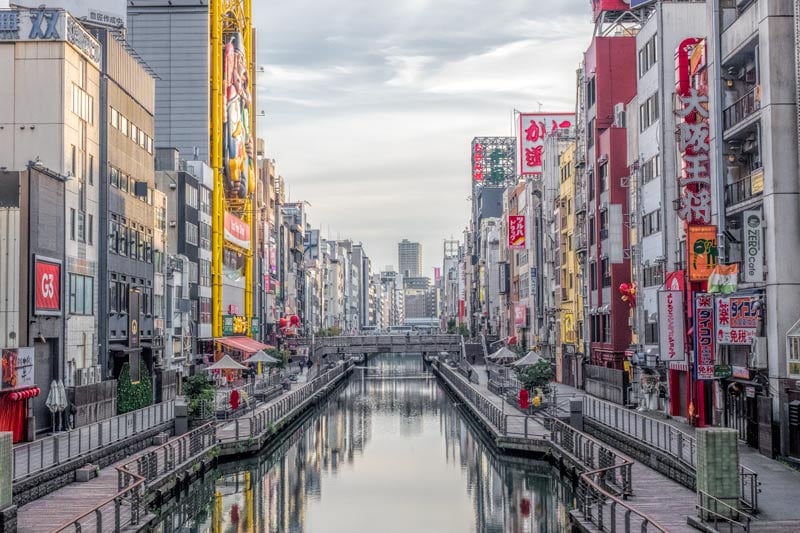
This popular destination in Namba runs along the Dotonbori canal between the Nipponbashi and Dotonboribashi bridges. The main activity in Dotonbori is EATING. You’ll find everything from Michelin-starred restaurants to cheap but delicious street food.
It’s fun to wander around at any time of day but especially at night when the neon lights are beaming bright and reflected on the water. Make sure to watch out for the Glico running man, this neon sign has been lighting up the site since 1935 although it’s had a few overhauls and updates to reflect sporting events and teams in Japan over the years. It’s among the most photographed icons in Osaka.
2. Step back in time at Osaka castle
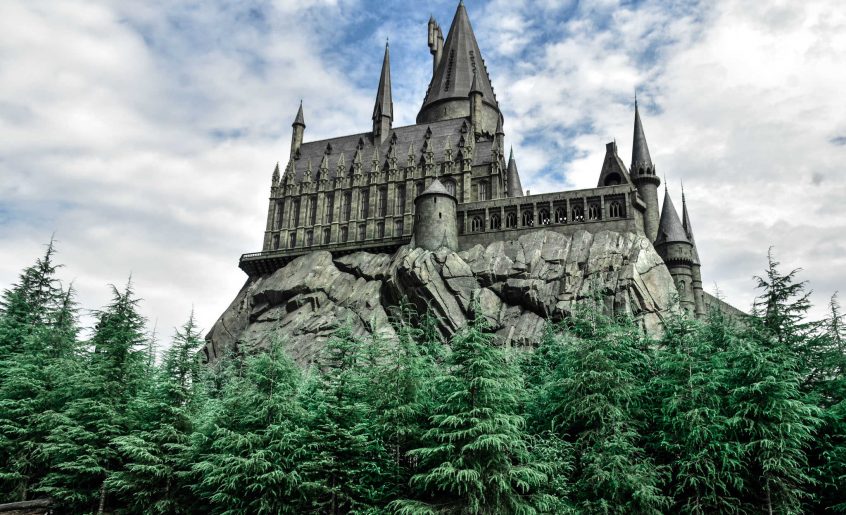
A visit to Osaka Castle can leave you feeling as if you’ve stepped back in time to feudal Japan. Although it’s not one of the few remaining original castles having been lost during WWII, it’s a dramatic part of the city landscape. Inside the castle is a museum and if you make your way to the top the view is quite good from here. The park and gardens retained around the castle are extensive and it gives you a feel for the way the feudal leaders were able to look out on their territories even from a flatland castle.
3. See the views from the Umeda Sky Building
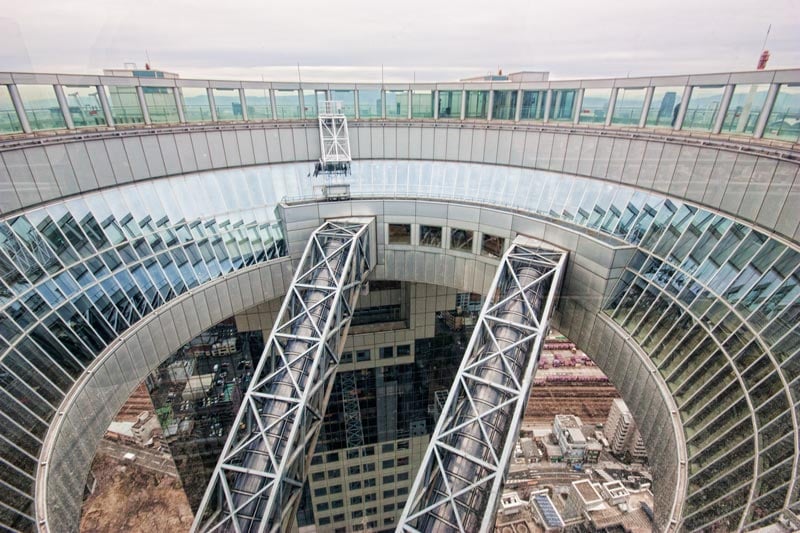
Something we love to do when we head to a new destination is find the high point and get a perspective from above. It’s usually quite spectacular and helps us in the days that follow to understanding the layout of the area a little better. In Osaka not only will you get incredible views from the Umeda Sky Building of the surrounding city, suburbs and rivers but the building itself is a work of art. We had the Osaka Amazing Pass on our first visit to the city so headed up the massive escalators of the Umeda Sky Building in the late afternoon for daytime views then settled into the bar for a drink so we could watch the daylight fade and the city light up for the evening. Osaka city is massive and from up here you truly get an appreciation for that.
4. Minoo Falls and Park
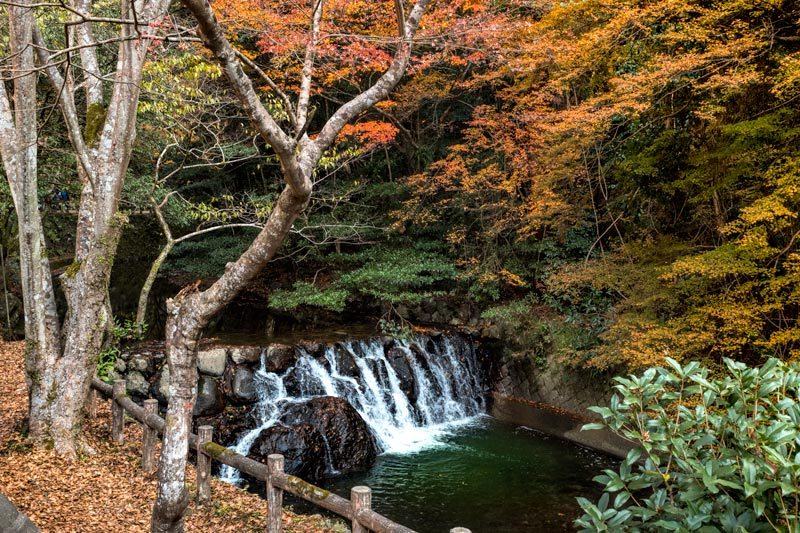
An easy day trip from the city is Minoo Falls and park. While beautiful in all seasons it is possibly Osaka’s top spot for the autumn colour. It’s an easy walk on paved paths although you are going substantially uphill on gentle gradient. In addition to the natural beauty along the way you’ll pass traditional shopping streets, ryokan, a free foot spa to revive tired feet on the way home, a Shinto Shrine and Buddhist temple. At the end of the trail you’ll come to the dramatic Minoo Falls although on the day we went we were stopped short of the final destination as the track had been closed for repair following damage by a typhoon so we had to settle for smaller falls like these along the way, still very pretty and a highly recommended way to spend the day.
5. Universal Studios
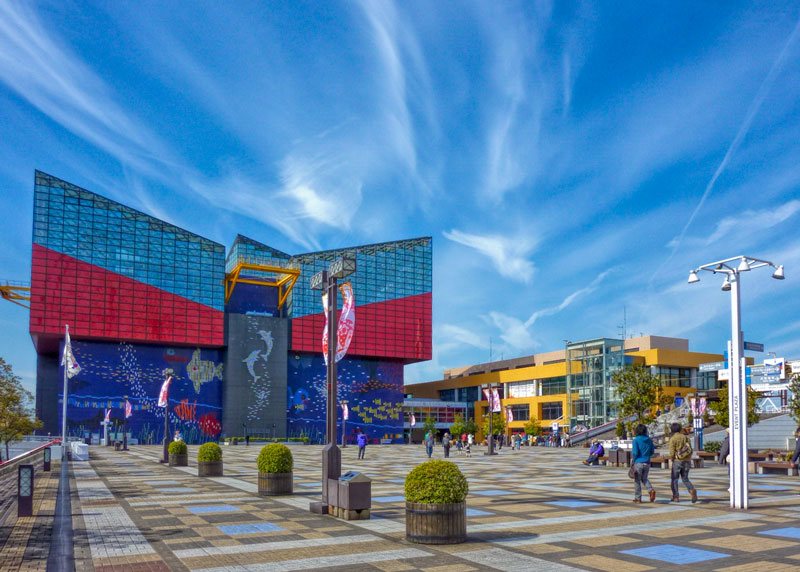
While Tokyo has Disney, Osaka has Universal Studios. Universal Studios Japan is a large and popular park that’s easily accessed by train from within Osaka or surrounding cities. It features a wide variety of rides and attractions themed on popular movies including the Minions, Spiderman and Jurassic Park but it’s the Wizarding World of Harry Potter that makes his unmissable for every Hogwarts fan young and old. All the fabulous magical location are here, flourish your wand and cast special spells as you move around the park then grab a butter-beer and wait for it to get dark, the place is even better after sunset.
Osaka is known for its fine sake, which is made with fresh water from the prefecture’s mountains. Osaka’s culinary prevalence is the result of a location that has provided access to high quality ingredients, a high population of merchants, and proximity to the ocean and waterway trade. In recent years, Osaka has started to garner more attention from foreigners with the increased popularity of cooking and dining in popular culture.
